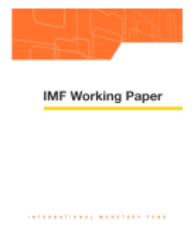
On Corruption and Capital Accumulation
Reforming economies have typically placed little attention on the impact of illegal activities on the success of reform/stabilization packages and optimal policy design. This paper aims at developing a framework in which to assess an economy's response to alternative stabilization/reform packages as a function of the scope of corruption activities. The framework developed herein is a basic one in which only the most fundamental questions (such as the effects of anti-corruption government policies on output and welfare) are examined. The more interesting questions of the optimal design of stabilization and economic reform policies remain to be addressed in future extensions of the model. The framework also accommodates political-economy analysis, and is able to explain why, even when able to eliminate corruption activity altogether, governments may choose not to do so. Our framework differentiates between developing and developed economies according to the income share accruing to capital, as is common in the literature. In equilibrium, the effect of anti-corruption penalties on the economy's capital stock is greater in developing countries; in particular, we find that the elasticity of the steady state average per capita stock of capital with respect to increases in anti-corruption penalties is increasing in the income share accruing to capital. The model also shows that reductions in public good output, as a fraction of the economy's total expenditure, lead to larger welfare decreases when in the presence of corruption.
Publication date: July 1994
ISBN: 9781451850819
$15.00
Add to Cart by clicking price of the language and format you'd like to purchase
Available Languages and Formats
| English |
Prices in red indicate formats that are not yet available but are forthcoming.
Topics covered in this book
This title contains information about the following subjects.
Click on a subject if you would like to see other titles with the same subjects.
Political Process- General , Public Affairs and Administration , anti-corruption , bribes , bureaucratic corruption , corrupt activities , incidence of corruption
Also of interest
Summary
Copyright © 2010 - 2025
Powered by:
AIDC



